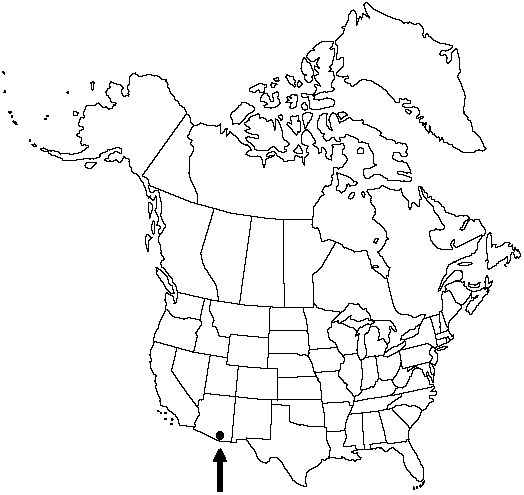Difference between revisions of "Asplenium dalhousiae"
Icon. Pl. plate 105. 1837.
FNA>Volume Importer |
imported>Volume Importer |
||
| (7 intermediate revisions by 2 users not shown) | |||
| Line 12: | Line 12: | ||
|name=Ceterach dalhousiae | |name=Ceterach dalhousiae | ||
|authority=(Hooker) C. Christensen | |authority=(Hooker) C. Christensen | ||
| − | }}{{Treatment/ID/Synonym | + | |rank=species |
| + | }} {{Treatment/ID/Synonym | ||
|name=Ceterachopsis dalhousiae | |name=Ceterachopsis dalhousiae | ||
|authority=(Hooker) Ching | |authority=(Hooker) Ching | ||
| + | |rank=species | ||
}} | }} | ||
|hierarchy=Aspleniaceae;Asplenium;Asplenium dalhousiae | |hierarchy=Aspleniaceae;Asplenium;Asplenium dalhousiae | ||
| Line 23: | Line 25: | ||
}}<!-- | }}<!-- | ||
| − | --><span class="statement" id="st- | + | --><span class="statement" id="st-undefined" data-properties=""><b>Roots </b>not proliferous. <b>Stems</b> erect, unbranched; scales black with brown margins, lanceolate, 2–5 × 0.6–1 mm, sparsely denticulate. <b>Leaves</b> monomorphic. <b>Petiole</b> dark to light brown throughout, dull, to 1 cm, 1/10–1/15 length of blade, indument of scales throughout. <b>Blade</b> narrowly elliptic to narrowly lanceolate, pinnatifid, 4–15 × 1.5–6 cm, thick, sparsely puberulent to glabrescent; base gradually tapered; apex obtuse, not rooting. <b>Rachis</b> light brown to tan, dull-scaly; scales brown, lanceolate. <b>Veins</b> free, obscure. <b>Sori</b> 3–7 pairs per pinna, on both basiscopic and acroscopic sides of lobes. <b>Spores</b> 64 per sporangium. <b>2n</b> = 72.</span><!-- |
-->{{Treatment/Body | -->{{Treatment/Body | ||
| Line 29: | Line 31: | ||
|elevation=1300–2000 m | |elevation=1300–2000 m | ||
|distribution=Ariz.;n Mexico;Asia in the Himalayas. | |distribution=Ariz.;n Mexico;Asia in the Himalayas. | ||
| − | |discussion=<p>In the flora, Asplenium dalhousiae is found only in the Mule, Huachuca, and Baboquivari mountains of southern Arizona. The pattern of disjunction in the worldwide range of this species is highly unusual.</p><!-- | + | |discussion=<p>In the flora, <i>Asplenium dalhousiae</i> is found only in the Mule, Huachuca, and Baboquivari mountains of southern Arizona. The pattern of disjunction in the worldwide range of this species is highly unusual.</p><!-- |
| − | --><p>Asplenium dalhousiae is sometimes placed in the genus Ceterach on the basis of its thick, pinnatifid leaves. Most pteridologists, however, restrict Ceterach to species with densely scaly, pinnatifid leaves. Asplenium dalhousiae is placed in Ceterachopsis by pteridologists who believe it merits its own genus.</p> | + | --><p><i>Asplenium dalhousiae</i> is sometimes placed in the genus Ceterach on the basis of its thick, pinnatifid leaves. Most pteridologists, however, restrict Ceterach to species with densely scaly, pinnatifid leaves. <i>Asplenium dalhousiae</i> is placed in Ceterachopsis by pteridologists who believe it merits its own genus.</p> |
|tables= | |tables= | ||
|references= | |references= | ||
| Line 39: | Line 41: | ||
-->{{#Taxon: | -->{{#Taxon: | ||
name=Asplenium dalhousiae | name=Asplenium dalhousiae | ||
| − | |||
|authority=Hooker | |authority=Hooker | ||
|rank=species | |rank=species | ||
| Line 53: | Line 54: | ||
|publication year=1837 | |publication year=1837 | ||
|special status= | |special status= | ||
| − | |source xml=https:// | + | |source xml=https://bitbucket.org/aafc-mbb/fna-data-curation/src/2e0870ddd59836b60bcf96646a41e87ea5a5943a/coarse_grained_fna_xml/V2/V2_160.xml |
|genus=Asplenium | |genus=Asplenium | ||
|species=Asplenium dalhousiae | |species=Asplenium dalhousiae | ||
| − | |||
| − | |||
| − | |||
| − | |||
| − | |||
| − | |||
| − | |||
| − | |||
| − | |||
| − | |||
| − | |||
| − | |||
| − | |||
| − | |||
| − | |||
| − | |||
| − | |||
| − | |||
| − | |||
| − | |||
| − | |||
| − | |||
| − | |||
| − | |||
| − | |||
| − | |||
| − | |||
| − | |||
}}<!-- | }}<!-- | ||
-->[[Category:Treatment]][[Category:Asplenium]] | -->[[Category:Treatment]][[Category:Asplenium]] | ||
Latest revision as of 20:21, 5 November 2020
Roots not proliferous. Stems erect, unbranched; scales black with brown margins, lanceolate, 2–5 × 0.6–1 mm, sparsely denticulate. Leaves monomorphic. Petiole dark to light brown throughout, dull, to 1 cm, 1/10–1/15 length of blade, indument of scales throughout. Blade narrowly elliptic to narrowly lanceolate, pinnatifid, 4–15 × 1.5–6 cm, thick, sparsely puberulent to glabrescent; base gradually tapered; apex obtuse, not rooting. Rachis light brown to tan, dull-scaly; scales brown, lanceolate. Veins free, obscure. Sori 3–7 pairs per pinna, on both basiscopic and acroscopic sides of lobes. Spores 64 per sporangium. 2n = 72.
Habitat: Moist, rocky ravines, terrestrial among and at bases of rocks
Elevation: 1300–2000 m
Distribution

Ariz., n Mexico, Asia in the Himalayas.
Discussion
In the flora, Asplenium dalhousiae is found only in the Mule, Huachuca, and Baboquivari mountains of southern Arizona. The pattern of disjunction in the worldwide range of this species is highly unusual.
Asplenium dalhousiae is sometimes placed in the genus Ceterach on the basis of its thick, pinnatifid leaves. Most pteridologists, however, restrict Ceterach to species with densely scaly, pinnatifid leaves. Asplenium dalhousiae is placed in Ceterachopsis by pteridologists who believe it merits its own genus.
Selected References
None.